#california tortoiseshell
Text
CALIFORNIA TORTOISESHELL BUTTERFLY
nom nom nom!!!!

nom nom!!!!!!!!!!!!!!!!1
#the butterflies are inevitable#california tortoiseshell butterfly#california tortoiseshell#butterflies#butterfly
2 notes
·
View notes
Text

2K notes
·
View notes
Text
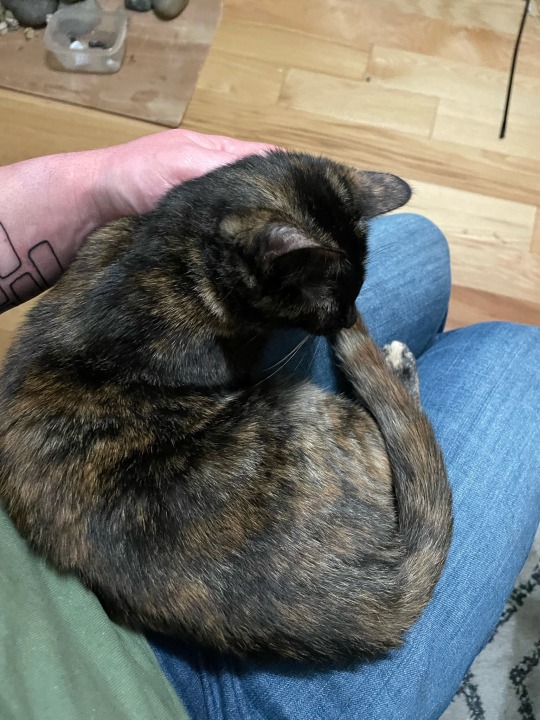
Meet darling Zelda!
Zelda is about 4 months old. Though she hasn't been spayed, she has been de-wormed and basic flea med.
She's super snuggly and loves to play. Will jump up and put her head in your head for attention! She also loves belly rubs- she's a very quirky little kitty! Gentle and sweet. Eats well and uses her litter box. She's remarkably calm for a kitten. She'll grow into an excellent little kitty and is certainly looking forward to being part of a family.
Petaluma, CA
#kitten#adopt#kitty#pet#house cat#tortoiseshell#adoption#foster care#foster kitten#petaluma#california
2 notes
·
View notes
Text






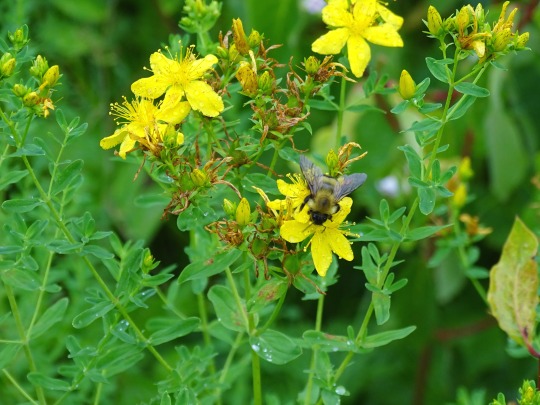





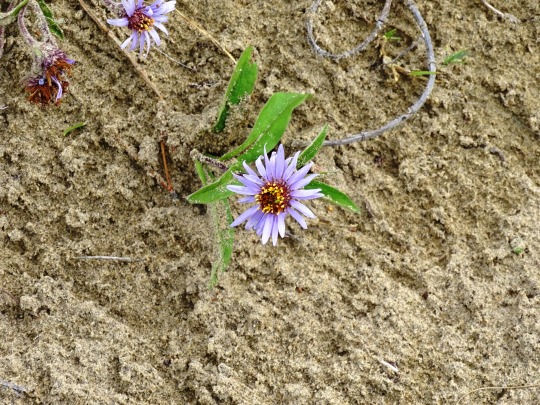

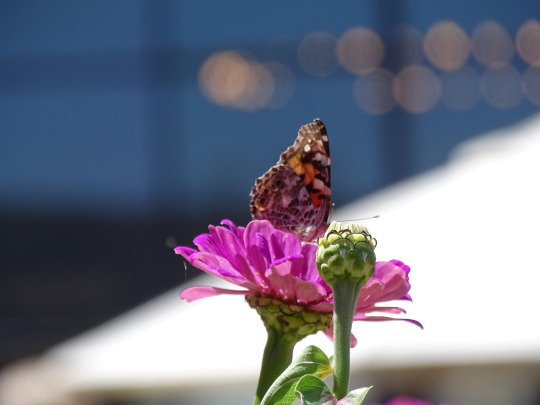
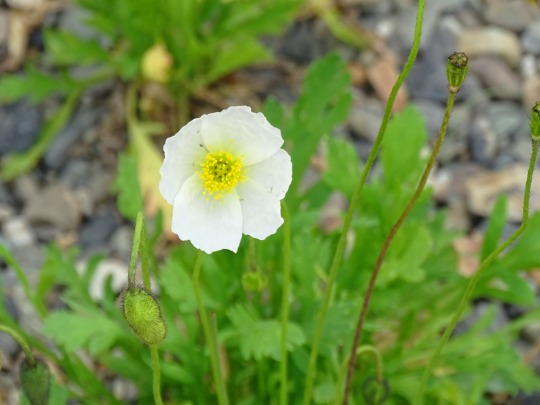
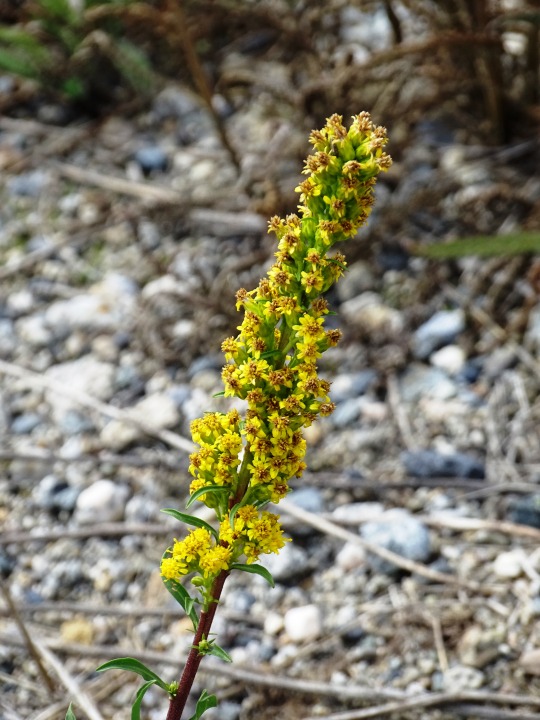

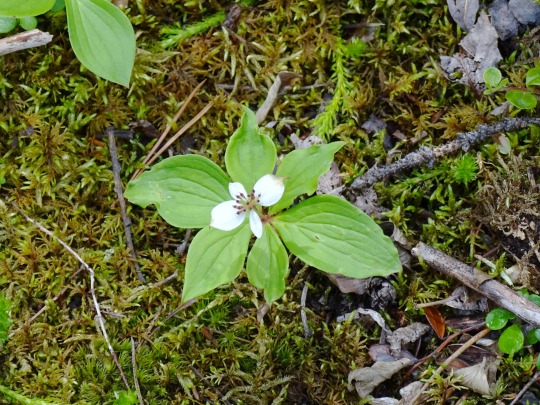



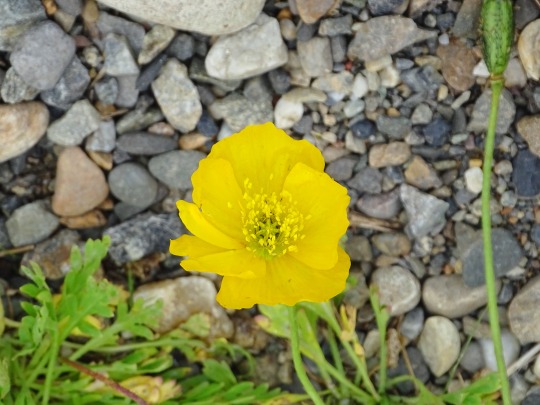



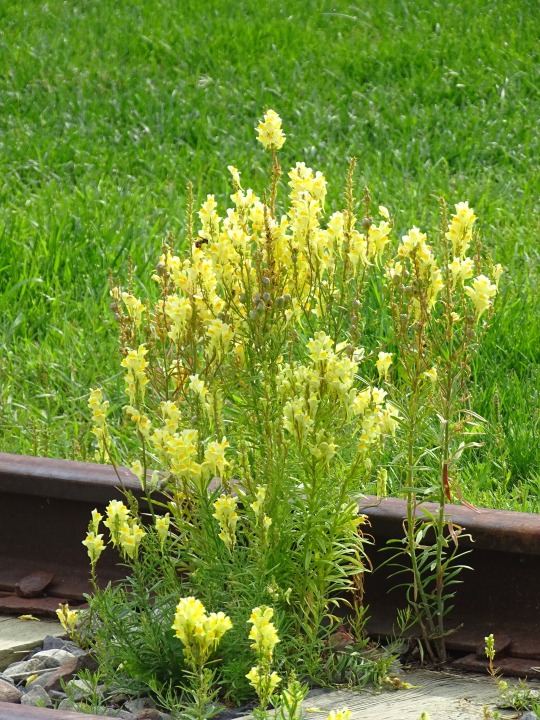



Vernal/Spring Equinox
The March Equinox is an annual celebration that occurs on March 20. In the Northern Hemisphere, the March Equinox is referred to as the vernal equinox. It marks the start of Spring in the Northern Hemisphere and the autumn season in the Southern Hemisphere. It marks the Sun’s crossing above the Earth’s equator, moving from south to north. Like all equinoxes, the March equinox is distinctive in that it has almost exactly the equal amount of daylight and nights across many latitudes of Earth.
History of March Equinox
Wherever you may be on Earth, the equinox brings us several seasonal effects which have been noticeable to nature lovers around the globe for years. The word ‘equinox’ originates from two Latin words: ‘aequus’ meaning equal and ‘nox’ meaning night. The literal meaning is ‘equal night.’ Our ancestors, who had far less precise timekeeping than we do, believed that night and day were equal. But today we know this is not true.
People have been celebrating the March Equinox for centuries and since it is associated with spring the festivals tend to celebrate fertility and agriculture. The Romans used this day to celebrate their goddess Cybele who has driven around in a chariot drawn by lions. Ancient Persia in roughly 550 B.C., celebrated the vernal equinox as Nowruz, their New Year. Modern Iranians still celebrate this time as their New Year. During the era of the Shang Dynasty, which ruled China from 1600 to 1046 B.C., it was believed that the spring equinox marked a mythic beginning, a type of ‘start of their line.’ Jews in the 12th Century believed that the spring equinox marked the day in the year in which the Biblical plague that turned Egypt’s water into blood occurred.
The festival of ‘Holi’ is the March equinox festival in India. This is celebrated in honor of various Hindu deities and legends. It signals the triumph of Good vs Evil, the most notable being the legend of Krishna and Rhada. Ancient cultures had great awareness of nature, the seasons, and the movement of the celestial bodies. Many built sites that had a glaringly obvious use: that of a calendar. These were often aligned to display shafts of sunlight during solstices and equinoxes. Examples of these are Chichen Itza in Mexico, Mnajdra Temples in Malta, and Stonehenge in England.
March Equinox timeline
Before the year 68 B.C.The Sun Lines Up in Aries
The sun lines up with Aries on the spring equinox but in 2567 the sun will line up with the constellation Aquarius.
2700 B.C.The Egyptian Easter Monday
Sham el-Nessim is an ancient Egyptian holiday that can be traced back to 2700 B.C.
1582The Gregorian Calendar Created
The Gregorian calendar is created and is based on the March equinox, falling from March 11 to March 21, the date it occurred in 325 CE.
1948Japanese Make Holiday Secular
In Japan, those who practiced Shintoism used the March equinox to honor their ancestors.
March Equinox FAQs
What happens during the March equinox?
During this time the Sun will cross the celestial equator from the south to the north.
What is the spiritual meaning?
Tradition states that this is the time to cleanse out old energy at home and with oneself.
Why is equinox important?
Equinox is important because it points to changing seasons.
March Equinox Activities
Spring Clean
Do some gardening
Visit ancient sites
The March equinox is the perfect time to give your house an overhaul. Start by decluttering your house.
Growth symbolizes triumph over death and being reborn therefore it has become a tradition to plant seeds at this time of the year. Add some colorful flowers to your garden to celebrate spring.
Various ancient sites are linked to March equinox celebrations and traditions. Pack a bag, call a friend or two and set out on an adventure.
5 Facts About The March Equinox
The sun rises and sets the fastest
Spring occurs on two different days
It’s Mother's day
It marks the middle of Spring
It signals the start of a festival
The fastest sunsets and sunrises occur during this time of the year.
There are two different calendars: the astronomical and the meteorological calendar. If we go by the astronomical calendar, spring will fall on March 20 but if we go by the other, spring will occur on March 1.
In Arab countries, Mother's Day is often observed on the March equinox.
In East Asian countries the March equinox marks the halfway point of spring.
Boatyard employees and sailboat owners in the U.S hold the Burning of the Socks festival where socks are burnt to celebrate the warmer weather.
Why We Love March Equinox
It is celebrated around the world
It signals new beginnings
Days are longer
The March equinox is celebrated by many cultures around the world. We love that it has a unifying factor.
The March equinox symbolizes growth and new beginnings. It is a clear marker of the change from winter to spring.
Along with longer days, the weather starts to warm up as well. Nature reflects this change with the blooming of new flowers and plants.
Source
#wildflower#butterfly#summer flowers#travel#original photography#vacation#landmark#blooming#flora#insect#Painted Lady#Milbert's tortoiseshell#USA#Canada#19 March 2024#20 March 2024#It depends where you live#Spring Equinox#First Day of Spring#Vernal Equinox#March Equinox#tourist attraction#landscape#British Columbia#Yukon#Alberta#California#Oregon#Washington#summer 2023
0 notes
Text
𝐚𝐧𝐚𝐬𝐭𝐚𝐬𝐢𝐚 𝐳𝐞𝐠𝐫𝐚𝐬, zegras' has more fun

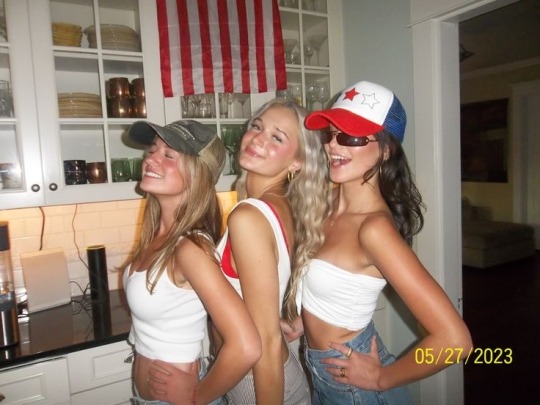

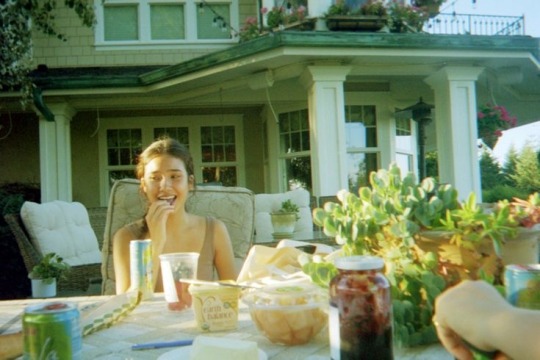

★ some fun facts about our fav zegras!

stass is closest to her younger sister, ava but she insists she loves all her siblings equally
stass has a confident attitude which can come off as cocky to some people, much like her older brother trevor
nonetheless, she is the sweetest person to people who deserve it
she is an extrovert, she thrives off being around her loved ones
stass is fiercely loyal to her family/friends, she will go to extreme measures to make sure they're safe/comfortable
she's a momma's girl, for sure ─ she and her mom text all the time when she moved to michigan, for her, leaving her mom/sister was the hardest part of the move
she is for sure a cat person, she has two cats back in new york named archer (named after the archer, by ts) and ginny (ginny from hp series)
ginny is a family cat, she's a orange cat (obviously, she's a weasley) and she the oldest (9 years old). she bonded more to ava rather than y/n.
archer is her cat, he's a tortoiseshell cat and she found him wandering her yard as a stray back in 2020. he is turning 4 in october & he's the sweetest boy ever
she has two best friends, brie (@/briesbagels) and parker (@/pchandler68)
brie and stass met on the first day of 7th grade, they quickly bonded over their love taylor swift, and have been inseparable since
on snapchat, they have a 213 day streak (but they've lost it plenty of times before, their highest was almost 350)
parker and stass have been next door neighbors for almost their entire lives but half of that time was spent hating each other
until, they bonded over their shared hatred for their other next door neighbor, an old miserable couple ─ mr. and mrs. harris
parker has played hockey since 6th grade. he had recently found out how good he was on the ice and now, he easily out-played any of his team members back in bedford
unfortunately, brie decided not to go to UMICH, she lives in california and goes to UC berkeley and majors in psychology
parker's original plan was to go to minnesota but unexpectedly got signed to michigan, and now he plays for UMICH
her and parker had lived together for freshmen year which was a disaster, so for her upcoming sophomore year she decided to move in an apartment with one of her friends
more will be added as the AU continues and progresses...
#zegras' have more fun au#nhl imagine#nhl#jack hughes#nhl fic#adam fantilli#nhl oneshot#hockey#umich blurbs#umich imagine#umich hockey#umich boys#umich wolverines#dylan duke#luca fantilli#ethan edwards#luke hughes blurb#luke hughes x oc#luke hughes fic#luke hughes x reader#luke hughes imagine#jack hughes blurb#jack hughes fic#jack hughes x reader#jack hughes imagine#jack hughes x y/n#trevor zegras fic#trevor zegras x reader#trevor zegras fluff#trevor zegras imagine
123 notes
·
View notes
Text
More ✨ RANDOM HEADCANONS ✨
Washington has a bumper sticker that says "Bigfoot is real and I helped him commit tax fraud" and a shirt that says "Bigfoot is real and he tried to eat my ass"

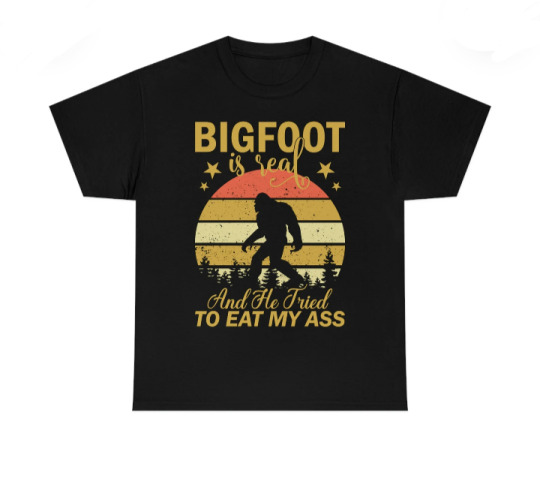
California is obsessed with Pedro Pascal and has watched THE edit so many times
BONUS: Florida has played the edit on full volume during a meeting just to watch Cal get flustered and fanboy over Pedro
New York loves broadway and show tunes
Hawaii is the lesbian extrovert that adopted Alaska as her gay introvert best friend
Massachusetts, New York, Maine, Georgia, and California all own cats
Massachusetts has a Turkish Angora named Marie
New York has a Tortoiseshell named Brooklyn (fun fact: 99.6% of Tortoiseshell cats are female)
Maine has a Maine Coon named Milo
Georgia has a Burmese named Chestnut and a Himalayan named Boots
California has two Calicos names Angeles and Fransisco
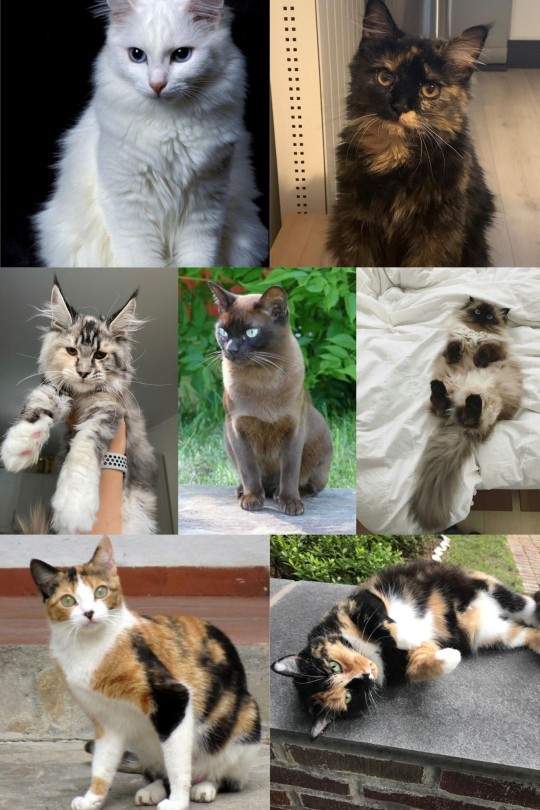
Florida writes fanfiction and claims it wasn't him because he 'can't read' he's just dyslexic
Texas owns these


Maryland calls Siri 'hon'
California and New York watch SNL together sometimes Washington joins them
Louisiana loves AHS
Kansas is obsessed with SPN and has "forced" (Iowa is also obsessed with Supernatural) Iowa to watch it with him multiple times. They have cosplayed destiel, one time they force Minnesota to come with them as Sam
#ben brainard#welcome to the statehouse#welcome to the table#wttt#wttt california#wttt new york#wttt florida#wttt washington#wttt massachusetts#wttt maine#wttt georgia#wttt hawaii#wttt alaska#wttt maryland#wttt oklahoma#wttt louisiana#wttt kansas#wttt iowa#wttt minnesota
100 notes
·
View notes
Text

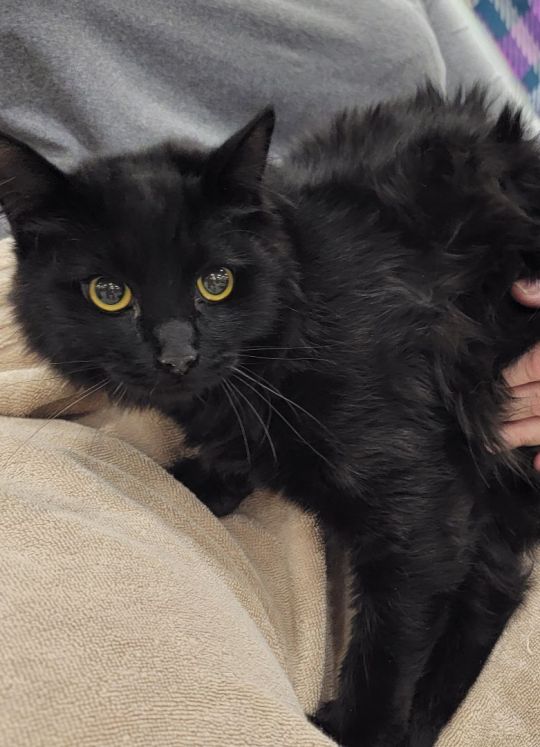

Butchie from People for Pets in Tracy, California
Click here for more information about adoption and other ways to help!
Click here for a link to People for Pets' main website.
Butchie is a gorgeous sleek & shiny black tortoiseshell with stunning green eyes. Born April 27th, 2022 he is young and playful and enjoys the company of people and other cats & he tolerates gentle dogs. Butchie is neutered, current on vaccines and microchipped.
23 notes
·
View notes
Photo


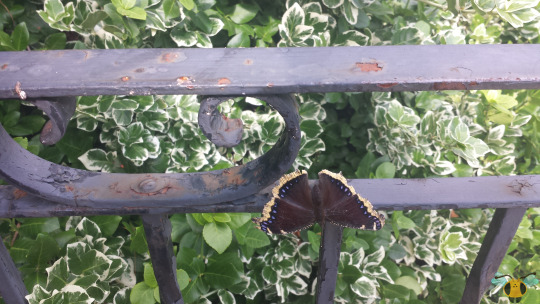
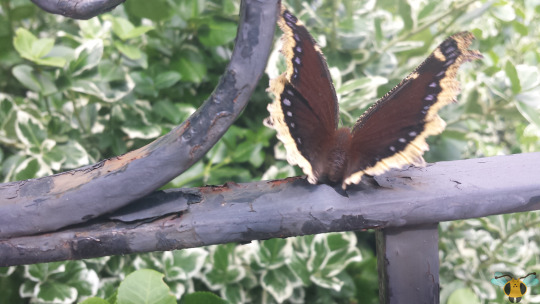

Mourning Cloak Butterfly - Nymphalis antiopa
It’s a bit early to revisit this magnificent dark-winged insect, but I have good reason to do so. The prior posts showed specimens at rests with their wings folded up, and while the wings remain folded up, this elusive Brush-Footed Butterfly resembles a dried leaf. Very inconspicuous if you happen to perch on a branch, among leaf litter or as it feeds on nectar or tree sap. While useful to avoid predation, it means photographers get only a fleeting chance to see the scales on the wings’ dorsal sides. Looking through some of the older photos, looks like I had a lucky find on the porch with an individual who was briefly sunning before taking off. Behold: a smooth brown and black blending, yellow borders and little blue accents! What a beautiful sight! This combination of colors is quite similar to that of the Eastern Black Swallowtail (one of my favorites to photograph). If you compare the two however, there’s no mistaking which is which. Furthermore, while the Swallowtail’s males and females can be distinguished at a glance, the Mourning Cloak requires a more technical approach...unless you see it patrolling over a territory, that’s a male.
Seeing the dorsal colors of the Mourning Cloak, I see a little more credibility to the whole “resembles a Carolina Locust in flight” observation. Not to dwell on it too long, but both insects don’t even fly the same way. I guess that’s my advice to you if you see something fly by quickly with yellow borders around the wings. To further touch on the wing color of this Butterfly (and other members of the Nymphalis genus), the Mourning Cloak’s genus has a common name: the Tortoiseshells. From what I gather, they are so named for their dorsal wing colors: orange, brown and black. The Mourning Cloak falls on the dark side of the color wheel, while other species such as the California and Compton Tortoiseshells (2 North American species) prominently sport vibrant orange wings with dark borders and spots (dorsally). The Mourning Cloak seems larger than the latter two examples as well, so if you’re going Tortoiseshell hunting, watch for the smaller Butterflies; they aren’t likely to be Monarch-sized, even if they wear similarly colored wing scales. I’ve yet to find some myself, but I’ll look carefully and hopefully open a new area for the blog.
Pictures were taken on July 4, 2017 with a Samsung Galaxy S4. Next week, a second look at another pretty Butterfly that warrants more exploration.
#jonny’s insect catalogue#ontario insect#butterfly#mourning cloak#mourning cloak butterfly#brush footed butterfly#lepidoptera#insect#toronto#july2017#2017#entomology#nature#invertebrates
13 notes
·
View notes
Note
tricky treat
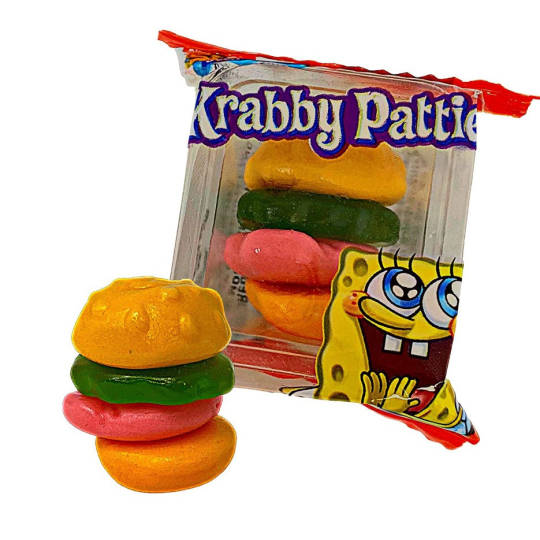

hii. canty & California Tortoiseshell
4 notes
·
View notes
Text

INTRODUCTION
Wait is that (TABITHA COHEN) that I see off in the distance? You know they have quite the reputation of being the (WEIRDO) around the island, but to me they seem like any other (LOCAL). I hear you can often find the (36) year old hanging around (DRIFTWOOD SANDS) or catch them when they aren’t busy working as a (SCHOOL LIBRARIAN). They may seem (HELPFUL and ECCENTRIC) but I hear that they can also be (ANXIOUS and CLINGY). There may be a lot of faces here in the bay, but you’ll know who you’re dealing with if they remind you of (THE SMELL OF TEA WITH HONEY, CLOTHES WITH FUN PATTERNS, PLAYFUL ARGUING OVER TRIVIA, SECRET SMILES THAT PROMISE MORE) [bri, 30, she/her, est]
Name: Tabitha Anne Cohen
Nickname: Tabby, Tabby Cat, Miss Frizz, The Weirdo, Hot Librarian (she pretends she doesn't know about that one)
Gender/Pronouns: Cisfemale, she/her
Sexuality: Pansexual
Age: 36
Date of Birth: February 1, 1987
Place of Birth: Brooklyn, NY
Biography:
Tabitha was born as the oldest daughter to Ira and Barbara Cohen in Brooklyn. She is the oldest of three. She grew up in Brooklyn until she left for college.
She grew up in a large and loving Jewish family, celebrating holidays together. She also had a lot of friends from different cultures, so she was exposed to all different kinds of music and food.
Went to a SUNY in upstate New York for her undergrad. She majored in Education with minors in English and Women's, Gender, and Sexuality Studies.
While she was there, she discovered her pansexuality, though at the time she called it bisexuality. She dated around and had fun but never had anything very serious.
For her Masters in Library and Information Studies, she went to the University of North Carolina. She had family who lived in the state, and was able to live with them during her program.
After she graduated, she got a job as an elementary school librarian back in New York, where she worked for 5 years.
It was there she met a boy and they dated for 3 of those years. Tabby was in love with him, ready to make a real commitment but he was obviously not ready yet. She wasn't willing to take on the role of someone's mother so she dumped him and moved to get a fresh start.
She moved to California, trying to go as far away as possible. She got a job in a Los Angeles high school, ready to enjoy the sun. She worked there for 6 years, enjoying herself immensely. She headed the school's DnD club, taking on the role of Dungeon Master for several students.
Tabitha met a women there, getting engaged after a year of bliss. But as they were planning the wedding, the truth started to come out. Lies about money, lies about plans, it seemed that her fiancee wanted to get married sure, just not to Tabitha. So, after a few long talks and attempts at counseling, Tabitha broke the engagement and left again.
This time she ended up back in North Carolina, getting a job as the school librarian in Celestial Bay. She's ready for another great year of introducing her students to fantastic worlds and interesting concepts, while fully embracing her own quirky self.
Personality:
Above all else, Tabitha is a nerd. She loves Star Wars, Lord of the Rings, mythology, robots, Dungeons and Dragons. Her favorite past time is to read and it shows. She always either has a book or her Kindle in her bag.
She can be a little awkward and shy about meeting new people, so she'll often blurt out random fun facts to ease the way.
She's absolutely the kind of person to go above and beyond for a friend. She's in her thirties, she doesn't have time for wishy-washy people. If you want her in your life, you got her.
She enjoys wearing fun or silly patterned clothing to work, trying to make the kids smile.
She has a tortoiseshell cat named Mokey (after the character from Fraggle Rock).
She experimented in the BDSM scene in LA and enjoyed playing around with multiple partners and scenes.
She's not looking for love, but 3rd time's the charm, and she's certainly a bit of an old fashioned romantic.
Her favorite thing to do at the end of a long day is curl up with her cat and a cup of tea to either watch an old movie or read a mystery novel.
3 notes
·
View notes
Text
How Plastics Are Poisoning Us
They both release and attract toxic chemicals, and appear everywhere from human placentas to chasms thirty-six thousand feet beneath the sea. Will we ever be rid of them?
— By Elizabeth Kolbert | June 26, 2023

Annual production of plastic exceeds eight hundred billion pounds; much of it ends up as microplastics, spreading across the ocean. Illustration by Daniel Liévano
In 1863, when much of the United States was anguishing over the Civil War, an entrepreneur named Michael Phelan was fretting about billiard balls. At the time, the balls were made of ivory, preferably obtained from elephants from Ceylon—now Sri Lanka—whose tusks were thought to possess just the right density. Phelan, who owned a billiard hall and co-owned a billiard-table-manufacturing business, also wrote books about billiards and was a champion billiards player. Owing in good part to his efforts, the game had grown so popular that tusks from Ceylon—and, indeed, elephants more generally—were becoming scarce. He and a partner offered a ten-thousand-dollar reward to anyone who could come up with an ivory substitute.
A young printer from Albany, John Wesley Hyatt, learned about the offer and set to tinkering. In 1865, he patented a ball with a wooden core encased in ivory dust and shellac. Players were unimpressed. Next, Hyatt experimented with nitrocellulose, a material made by combining cotton or wood pulp with a mixture of nitric and sulfuric acids. He found that a certain type of nitrocellulose, when heated with camphor, yielded a shiny, tough material that could be molded into practically any shape. Hyatt’s brother and business partner dubbed the substance “celluloid.” The resulting balls were more popular with players, although, as Hyatt conceded, they, too, had their drawbacks. Nitrocellulose, also known as guncotton, is highly flammable. Two celluloid balls knocking together with sufficient force could set off a small explosion. A saloon owner in Colorado reported to Hyatt that, when this happened, “instantly every man in the room pulled a gun.”
It’s not clear that the Hyatt brothers ever collected from Phelan, but the invention proved to be its own reward. From celluloid billiard balls, the pair branched out into celluloid dentures, combs, brush handles, piano keys, and knickknacks. They touted the new material as a substitute not just for ivory but also for tortoiseshell and jewelry-grade coral. These, too, were running out, owing to slaughter and plunder. Celluloid, one of the Hyatts’ advertising pamphlets promised, would “give the elephant, the tortoise, and the coral insect a respite in their native haunts.”
Hyatt’s invention, often described as the world’s first commercially produced plastic, was followed a few decades later by Bakelite. Bakelite was followed by polyvinyl chloride, which was, in turn, followed by polyethylene, low-density polyethylene, polyester, polypropylene, Styrofoam, Plexiglas, Mylar, Teflon, polyethylene terephthalate (familiarly known as pet)—the list goes on and on. And on. Annual global production of plastic currently runs to more than eight hundred billion pounds. What was a problem of scarcity is now a problem of superabundance.
In the form of empty water bottles, used shopping bags, and tattered snack packages, plastic waste turns up pretty much everywhere today. It has been found at the bottom of the Mariana Trench, thirty-six thousand feet below sea level. It litters the beaches of Svalbard and the shores of the Cocos (Keeling) Islands, in the Indian Ocean, most of which are uninhabited. The Great Pacific Garbage Patch, a collection of floating debris that stretches across six hundred thousand square miles between California and Hawaii, is thought to contain some 1.8 trillion plastic shards. Among the many creatures being done in by all this junk are corals, tortoises, and elephants—in particular, the elephants of Sri Lanka. In recent years, twenty of them have died after ingesting plastic at a landfill near the village of Pallakkadu.
How worried should we be about what’s become known as “the plastic pollution crisis”? And what can be done about it? These questions lie at the heart of several recent books that take up what one author calls “the plastic trap.”
“Without plastic we’d have no modern medicine or gadgets or wire insulation to keep our homes from burning down,” that author, Matt Simon, writes in “A Poison Like No Other: How Microplastics Corrupted Our Planet and Our Bodies.” “But with plastic we’ve contaminated every corner of Earth.”
Simon, a science journalist at Wired, is especially concerned about plastic’s tendency to devolve into microplastics. (Microplastics are usually defined as bits smaller than five millimetres across.) This process is taking place all the time, in many different ways. Plastic bags drift into the ocean, where, after being tossed around by the waves and bombarded with UV radiation, they fall apart. Tires today contain a wide variety of plastics; as they roll along, they abrade, sending clouds of particles spinning into the air. Clothes made with plastics, which now comprise most items for sale, are constantly shedding fibres, much the way dogs shed hairs. A study published a few years ago in the journal Nature Food found that preparing infant formula in a plastic bottle is a good way to degrade the bottle, so what babies end up drinking is a sort of plastic soup. In fact, it is now clear that children are feeding on microplastics even before they can eat. In 2021, researchers from Italy announced that they had found microplastics in human placentas. A few months later, researchers from Germany and Austria announced that they’d found microplastics in meconium—the technical term for an infant’s first poop.
The hazards of ingesting large pieces of plastic are pretty straightforward; they include choking and perforation of the intestinal tract. Animals that fill their guts with plastics eventually starve to death. The risks posed by microplastics are subtler, but not, Simon argues, any less serious. Plastics are made from by-products of oil and gas refining; many of the chemicals involved, such as benzene and vinyl chloride, are carcinogens. In addition to their main ingredients, plastics may contain any number of additives. Many of these—for example, polyfluoroalkyl substances, or PFASs, which confer water resistance—are also suspected carcinogens. Many of the others have never been adequately tested.
As plastics fall apart, the chemicals that went into their manufacture can leak out. These can then combine to form new compounds, which may prove less dangerous than the originals—or more so. A couple of years ago, a team of American scientists subjected disposable shopping bags to several days of simulated sunlight, in order to mimic the conditions that they’d encounter flying or floating loose. The researchers found that a single bag from CVS leached more than thirteen thousand compounds; a bag from Walmart leached more than fifteen thousand. “It is becoming increasingly clear that plastics are not inert in the environment,” the team wrote. Steve Allen, a researcher at Canada’s Ocean Frontier Institute who specializes in microplastics, tells Simon, “If you’ve got an IQ above room temperature, you have to understand that this is not a good material to have in the environment.”
Microplastics, meanwhile, don’t just leach nasty chemicals; they attract them. “Persistent bioaccumulative and toxic substances,” or PBTs, are a hodgepodge of harmful compounds, including DDT and PCBs. Like microplastics, which are often referred to in the scientific literature as MPs, PBTs are everywhere these days. When PBTs encounter MPs, they preferentially adhere to them. “In effect, plastics are like magnets for PBTs” is how the Environmental Protection Agency has put it. Consuming microplastics is thus a good way to swallow old poisons.
Then, there’s the threat posed by the particles themselves. Microplastics—and in particular, it seems, microfibres—can get pulled deep into the lungs. People who work in the synthetic-textile industry, it has long been known, suffer from high rates of lung disease. Are we breathing in enough microfibres that we are all, in effect, becoming synthetic-textile workers? No one can say for sure, but, as Fay Couceiro, a researcher at England’s University of Portsmouth, observes to Simon, “We desperately need to find out.”
Whatever you had for dinner last night, the meal almost certainly left behind plastic in need of disposal. Before tossing your empty sour-cream tub or mostly empty ketchup bottle, you may have searched it for a number, and if you found one, inside a cheerful little triangle, you washed it out and set it aside to be recycled. You might also have imagined that with this effort you were doing your part to stem the global plastic-pollution tide.
The British journalist Oliver Franklin-Wallis used to be a believer. He religiously rinsed his plastics before depositing them in one of the five color-coded rubbish bins that he and his wife kept at their home in Royston, north of London. Then Franklin-Wallis decided to find out what was actually happening to his garbage. Disenchantment followed.
“If a product is seen as recycled, or recyclable, it makes us feel better about buying it,” he writes in “Wasteland: The Secret World of Waste and the Urgent Search for a Cleaner Future.” But all those little numbers inside the triangles “mostly serve to trick consumers.”
Franklin-Wallis became interested in the fate of his detritus just as the old order of Britain’s rubbish was collapsing. Up until 2017, most of the plastic waste collected in Europe and in the United States was shipped to China, as was most of the mixed paper. Then Beijing imposed a new policy, known as National Sword, that prohibited imports of yang laji, or “foreign garbage.” The move left waste haulers from California to Catalonia with millions of mildewy containers they couldn’t get rid of. “plastics pile up as china refuses to take the west’s recycling,” a January, 2018, headline in the Times read. “It’s tough times,” Simon Ellin, the chief executive of Britain’s Recycling Association, told the paper.
Trash, though, finds a way. Not long after China stopped taking in foreign garbage, waste entrepreneurs in other nations—Malaysia, Indonesia, Vietnam, Sri Lanka—started to accept it. Mom-and-pop plastic-recycling businesses sprang up in places where they were regulated laxly, if at all. Franklin-Wallis visited one such informal recycling plant, in New Delhi; the owner allowed him inside on the condition that he not reveal exactly how the business operates or where it is situated. He found workers in a fiendishly hot room feeding junk into a shredder. Workers in another, equally hot room fed the shreds into an extruder, which pumped out little gray pellets known as nurdles. The ventilation system consisted of an open window. “The thick fug of plastic fumes in the air left me dazed,” Franklin-Wallis writes.
Nurdles, which are key to manufacturing plastic products, are small enough to qualify as microplastics. (It’s been estimated that ten trillion nurdles a year leak into the oceans, most from shipping containers that tip overboard.) Usually, nurdles are composed of “virgin” polymers, but, as the New Delhi plant demonstrates, it is also possible to produce them from used plastic. The problem with the process, and with plastic recycling more generally, is that a polymer degrades each time it’s heated. Thus, even under ideal circumstances, plastic can be reused only a couple of times, and in the waste-management business very little is ideal. Franklin-Wallis toured a high-end recycling plant in northern England that handles pet, the material that most water and soda bottles are made from. He learned that nearly half the bales of pet that arrive at the plant can’t be reprocessed because they’re too contaminated, either by other kinds of plastic or by random crap. “Yield is a problem for us,” the plant’s commercial director concedes.
Franklin-Wallis comes to see plastic recycling as so much (potentially toxic) smoke and mirrors. Over the years, he writes, “a kind of playbook” has emerged. Under public pressure, a company like Coca-Cola or Nestlé pledges to insure that the packaging for its products gets recycled. When the pressure eases, it quietly abandons its pledge. Meanwhile, it lobbies against any kind of legislation that would restrict the sale of single-use plastics. Franklin-Wallis quotes Larry Thomas, the former president of the Society of the Plastics Industry, who once said, “If the public thinks recycling is working, then they are not going to be as concerned about the environment.”
Right around the time that Franklin-Wallis started tracking his trash, Eve O. Schaub decided to spend a year not producing any. Schaub, who has been described as a “stunt memoirist,” had previously spent a year avoiding sugar and forcing her family to do the same, an exercise she chronicled in a book titled “Year of No Sugar.” The year of no sugar was followed by “Year of No Clutter.” When she proposes a trash-free annum to her husband, he says he doubts it is possible. Her younger daughter begs her to wait until she goes away to college. Schaub plunges ahead anyway.
“As the beginning of the new year loomed, I was feeling pretty good about our chances,” she recalls in “Year of No Garbage.” “I mean, really. How hard could it be?”
What Schaub means by “no garbage” is not exactly no garbage. Under her scheme, refuse that can be composted or recycled is allowed, so her family can keep tossing out old cans and empty wine bottles along with food scraps. What turns out to be hard—really, really hard—is dealing with plastic.
At first, Schaub divides plastic waste into two varieties. There’s the kind with the little numbers, which her trash hauler accepts as part of its “single stream” recycling program and so, by her definition, doesn’t count as trash. Then, there’s the kind with no numbers, which isn’t supposed to go in the recycling bin and therefore does count. Schaub finds that even when she purchases something in a numbered container—guacamole, say—there’s usually a thin sheet of plastic under the lid that’s numberless. A lot of her time goes into rinsing off these sheets and other stray plastic bits and trying to figure out what to do with them. She is excited to find a company called TerraCycle, which promises—for a price—to “recycle the unrecyclable.” For a hundred and thirty-four dollars, she purchases a box that can be returned to TerraCycle filled with plastic packaging, and for an additional forty-two dollars she buys another box that can be filled with “oral care waste,” such as used toothpaste tubes. “I sent my TerraCycle Plastic Packaging box as densely packed with plastic as any box could be,” she writes.
Eventually, though, like Franklin-Wallis, Schaub comes to see that she’s been living a lie. Midway through her experiment, she signs up for an online course called Beyond Plastic Pollution, offered by Judith Enck, a former regional administrator for the E.P.A. Only containers labelled No. 1 (pet) and No. 2 (high-density polyethylene) get melted down with any regularity, Schaub learns, and to refashion the resulting nurdles into anything useful usually requires the addition of lots of new material. “No matter what your garbage service provider is telling you, numbers 3, 4, 6 and 7 are not getting recycled,” Schaub writes. (The italics are hers.) “Number 5 is a veeeery dubious maybe.”
TerraCycle, too, proves a disappointment. It gets sued for deceptive labelling and settles out of court. A documentary-film crew finds that dozens of bales of waste sent to the company for recycling have instead been shipped off to be burned at a cement kiln in Bulgaria. (According to the company’s founder, this is the result of an unfortunate mistake.)
“I had wanted so badly to believe that TerraCycle and Santa Claus and the Easter bunny were real, that I had been willing to overlook the fact that Santa’s handwriting looks suspiciously like Mom’s,” Schaub writes. Toward the end of the year, she concludes that pretty much all plastic waste—numbered, unnumbered, or shipped off in boxes—falls under her definition of garbage. She also concludes that, “in this day, age and culture,” such waste is pretty much impossible to avoid.
A few months ago, the E.P.A. issued a “draft national strategy to prevent plastic pollution.” Americans, the report noted, produce more plastic waste each year than the residents of any other country—almost five hundred pounds per person, nearly twice as much as the average European and sixteen times as much as the average Indian. The E.P.A. declared the “business-as-usual approach” to managing this waste to be “unsustainable.” At the top of its list of recommendations was “reduce the production and consumption” of single-use plastics.
Just about everyone who contemplates the “plastic pollution crisis” arrives at the same conclusion. Once a plastic bottle (or bag or takeout container) has been tossed, the odds of its ending up in landfill, on a faraway beach, or as tiny fragments drifting around in the ocean are high. The best way to alter these odds is not to create the bottle (or bag or container) in the first place.
“So long as we’re churning out single-use plastic . . . we’re trying to drain the tub without turning off the tap,” Simon writes. “We’ve got to cut it out.”
“We can’t rely on half-measures,” Schaub says. “We have to go to the source.” Her own local supermarket, in southern Vermont, stopped handing out plastic bags in late 2020, she notes. “Do you know what happened? Nothing. One day we were poisoning the environment with plastic bags in the name of ultra-convenience and the next? We weren’t.”
“We now know that we can’t start to reduce plastic pollution without a reduction of production,” Imari Walker-Franklin and Jenna Jambeck, both environmental engineers, observe in “Plastics,” forthcoming from M.I.T. Press. “Upstream and systemic change is needed.”
Of course, it’s a lot easier to talk about “turning off the tap” and changing the system than it is to actually do so. First, there are the political obstacles. For all intents and purposes, the plastics industry is a subsidiary of the fossil-fuel industry. ExxonMobil, for instance, is the world’s fourth-largest oil company and also its largest producer of virgin polymers. The connection means that any effort to reduce plastic consumption is bound to be resisted, either openly or surreptitiously, not just by companies such as Coca-Cola and Nestlé but also by corporations like Exxon and Shell. In March, 2022, diplomats from a hundred and seventy-five nations agreed to try to fashion a global treaty to “end plastic pollution.” At the first negotiating session, held later that year in Uruguay, the self-described High Ambition Coalition, which includes the members of the European Union as well as Ghana and Switzerland, insisted that the treaty include mandatory measures that apply to all countries. This idea was opposed by major oil-producing nations, including the U.S., which has called for a “country-driven” approach. According to the environmental group Greenpeace, lobbyists for the “major fossil fuel companies were out in force” at the session.
There are also practical hurdles. Precisely because plastic is now ubiquitous, it’s difficult to imagine how to replace all of it, or even much of it. Even in cases where substitutes are available, it’s not always clear that they’re preferable. Franklin-Wallis cites a 2018 study by the Danish Environmental Protection Agency which analyzed how different kinds of shopping bags compare in terms of life-cycle impacts. The study found that, to have a lower environmental impact than a plastic bag, a paper bag would have to be used forty-three times and a cotton tote would have to be used an astonishing seventy-one hundred times. “How many of those bags will last that long?” Franklin-Wallis asks. Walker-Franklin and Jambeck also note that exchanging plastic for other materials may involve “tradeoffs,” including “energy and water use and carbon emissions.” When Schaub’s supermarket stopped handing out plastic shopping bags, it may have reduced one problem only to exacerbate others—deforestation, say, or pesticide use.
“In the grand scheme of human existence, it wasn’t that long ago that we got along just fine without plastic,” Simon points out. This is true. It also wasn’t all that long ago that we got along just fine without Coca-Cola or packaged guacamole or six-ounce bottles of water or takeout everything. To make a significant dent in plastic waste—and certainly to “end plastic pollution”—will probably require not just substitution but elimination. If much of contemporary life is wrapped up in plastic, and the result of this is that we are poisoning our kids, ourselves, and our ecosystems, then contemporary life may need to be rethought. The question is what matters to us, and whether we’re willing to ask ourselves that question. ♦
— Published in the print edition of the July 3, 2023, The New Yorker Issue, with the headline “A Trillion Little Pieces.”
#Plastic Poisoning#Toxic Chemicals#On Earth and Under Seas#Microplastics#Plastic Pollution#PFASs#PBTs#MPs DDT & PCBs#E.P.A.#MIT Press#Coca Cola | Nestlé | Exxon | Shell#Greenpeace
3 notes
·
View notes
Photo

2K notes
·
View notes
Photo

The next of the #HeroPups is #Roselle, a sweet little golden tortoiseshell female who I heavily suspect is long hair. Roselle is one of the smaller pups and may be hard to tell as being a tortoiseshell as her markings are quite light, but she certainly is! Roselle is named after the very heroic guide dog, Roselle, who was born at Guide Dogs for the Blind in California in 1998. Roselle was with her own in the World Trade Centre during the September 11th attack. The day of the attack, she was asleep under her owner, Michael Hingon's desk on the 78th floor in tower 1. She woke up when the plane hit 15 floors above them. She was able to calmly help Hingson to stairwell B, despite all of the chaos surrounding her. Roselle led her owner and 30 other people down 1463 steps of the tower. The descent took just over an hour. As they exited, tower 2 collapsed and sent everyone into a panic. Roselle stayed focused on her job and calm. After, she made several public appearances, and was awarded a joint DIckin Medal with other guide dog, Salty, who guided his owner, Omar Rivera, from the 71st floor. Their medal reads: "For remaining loyally at the side of their blind owners, courageously leading them down more than 70 floors of the World Trade Center and to a place of safety following the terrorist attack on New York on September 11 2001". Roselle's courage, focus and dedication to her owner is inspiring. What a very good pup she was. Thank you for joining us and #LearningWithHamsters. 🐶 https://www.instagram.com/p/ClR4mMkA6zn/?igshid=NGJjMDIxMWI=
2 notes
·
View notes
Text
The Fascinating World of Cat Coat Patterns: A Look at What Makes Each One Unique
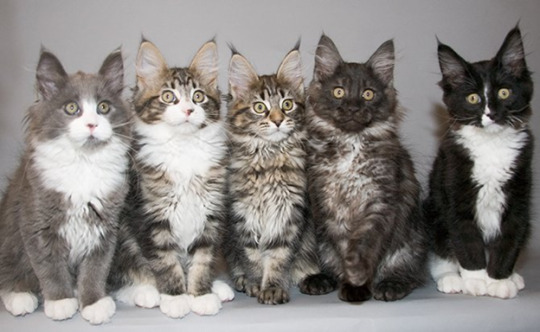
Introduction
Welcome to our exploration of the diverse and enchanting world of cat coat patterns! Cats capture our hearts and imaginations with their myriad colours and patterns. But have you ever wondered which cat coat pattern is the most popular or sought-after? In this journey, we'll delve into the beauty and uniqueness of various cat coat patterns, from the sleek solid black to the intricate tabby and everything in between.
Whether you're a cat lover, a curious reader, or considering adopting a feline friend, join us as we uncover the charm and popularity of these feline coat patterns, piecing together what makes each one special in the eyes of cat enthusiasts worldwide.
Common Cat Coat Patterns and Colors
Determining the most popular cat coat pattern involves different factors, including commonality, adoption rates, and people's preferences. Cats' various coat patterns and colours are uniquely appealing, influenced by cultural perceptions, breed characteristics, and individual preferences.
Solid Black: These cats are quite common but face a challenge in adoption due to superstitions. Nonetheless, their sleek and sophisticated look is appealing to many.
Solid White: Known for their bright, eye-catching coats and often having green or blue eyes, solid white cats are visually striking. However, many white cats, especially those with blue eyes, maybe deaf.
Tabby: is the most recognisable pattern, seen in various colors and featuring stripes or swirls. The primary tabby patterns include orange and grey, with additional sub-patterns based on stripe location.
Tortoiseshell: Featuring a mix of black, orange, and white patches, tortoiseshell cats are mostly female due to the genetics of their colouration.

Calico: Similar to tortoiseshells, calico cats display a combination of black, orange, and white but with more distinct blotches and a predominantly white background.
Reverse Calico: These have the same colours as regular calicos but with reversed dark and light patches.
Blue: Cats with a blue (slate grey) coat are often found in breeds like the Russian Blue, British Shorthair, and Chartreux.
Red: A rarer colouration ranging from light orange to deep red-brown, often seen in tabby patterns rather than as a solid colour.
Smoked: These cats have fur that is white at the roots but darkens toward the tips, commonly seen in long-haired breeds like the Maine Coon.
Bi-Colour: Typically consisting of two colours, black and white, these cats often include tuxedo cats and can be found in various other colour combinations.
Popularity and Preferences
A survey by the University of California, Davis, showed that people attribute different personality traits to cats based on colour, indicating that colour can influence adoption and preference. For instance, orange cats were perceived as friendly, while tri-coloured cats were considered more intolerant.
The Discerning Cat website also lists tabbies, tortoiseshells, calicos, and colours as some of the cats' most common colour patterns, further highlighting the prevalence and likely popularity.
According to a survey by The Catnip Times, people's preferences for cat breeds (and potentially their coat patterns) may also correlate with their personality types, as defined by the Myers-Briggs framework. However, the survey noted a general preference for domestic shorthair cats, indicating a shift towards favouring mixed-breed cats over purebreds for reasons beyond just coat patterns.
Conclusion
While it's challenging to pinpoint a single most popular cat coat pattern, tabby, calico, tortoiseshell, and bicolour patterns are among the most common and widely recognised. These patterns are cherished for their aesthetic appeal and diversity in the feline world. Individual preferences for cat coat patterns may vary greatly based on personal experiences, cultural backgrounds, and even personality types, making every cat coat unique and appealing in its own right.
0 notes
Text
Question Time!
Tagged by @honestlydarkprincess
1. Were you named after anybody?
My first name was, apparently, chosen by my mom watching Meg Ryan on a soap opera. But my middle name is passed along from her side of the family!
2. When was the last time you cried?
Literally last night (at work) while I wrote a death scene for a fic. Isn't it great?
3. Do you have kids?
I do not, though it is still something I'd love in the future, but I don't know if I'm ever gonna be financially stable enough for that.
4. Do you use sarcasm a lot?
Very much so. I picked it up from my family and it's very much my main trauma response.
5. What sports do you play/have played?
I played soccer and softball growing up, but then I stopped around the seventh grade because I found theater and singing to be my passions instead.
6. What's the first thing you notice about someone?
Oof. I mean I love people's eyes? But I also don't like eye contact a lot...I don't know. I think the vibe? Yeah, the vibe they give off. It's usually how I initially figure out if I'm gonna be okay around them or not.
7. Eye color?
I have blue eyes, but they do change in shade of blue depending on my mood and the light. I seriously wish my eyes were grey like my dad's.
8. Scary movies or happy endings?
Excuse you, I love both and refuse to pick. It's all about mood. But also I just hate unhappy endings either way.
9. Any special talents?
Does singing count? Otherwise, I cannot tell you. I guess maybe I have so much tv/film knowledge that I'm usually the one my family goes to when identifying a movie or actor? Is that special?
10. Where were you born?
California.
11. What are your hobbies?
Theatre, singing, reading, writing, crafts (crochet and cross stitch mostly), archery...
12. Do you have pets?
I absolutely do! Two cats, an orange tabby named Lido and a tortoiseshell named Shadowcat.
13. How tall are you?
5' 9"
14. Your favorite subject in school?
History and Psychology. While I love learning vocab terms and reading, I hated having to write essays in English.
15. Dream Job?
Honestly? I don't have a dream job anymore. With where I'm at, there's nothing that stands out above the rest. Currently, I would love to be a criminal psychologist, so that's what I'm planning to go back to school for.
I'm just randomly tagging here, so feel free @ralsbecket, @soldotnaandqueens, @trippedandfell, @oneawkwardcookie, @oliverstaark
1 note
·
View note